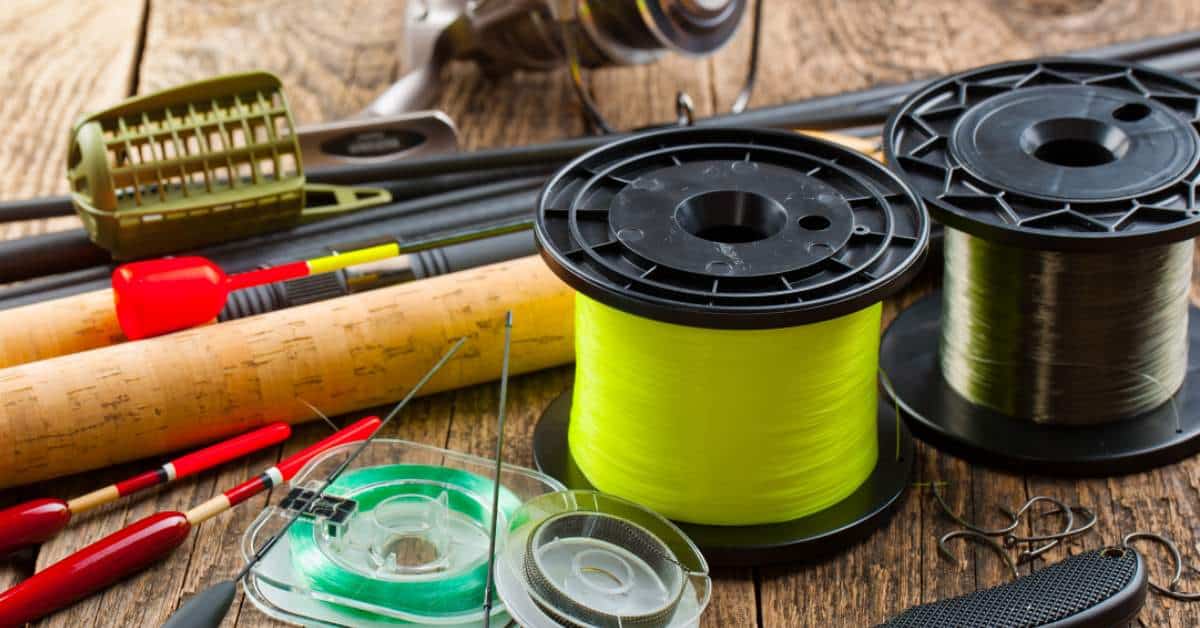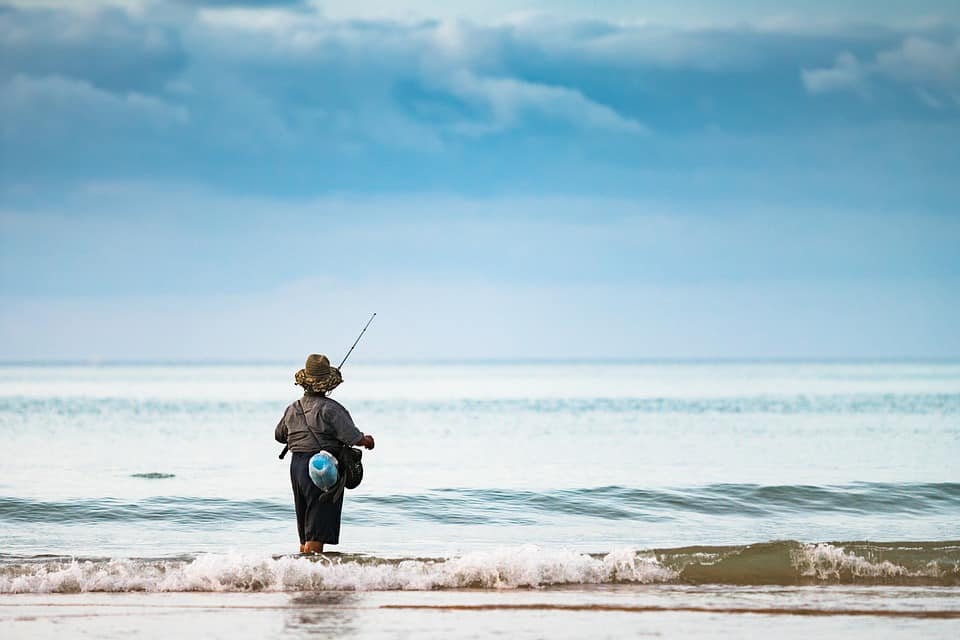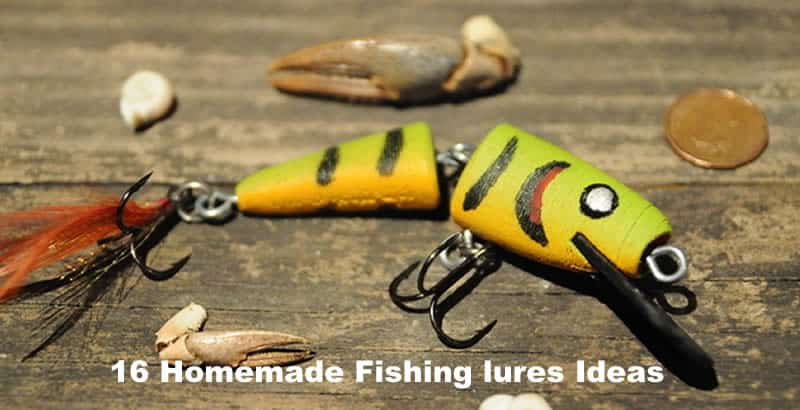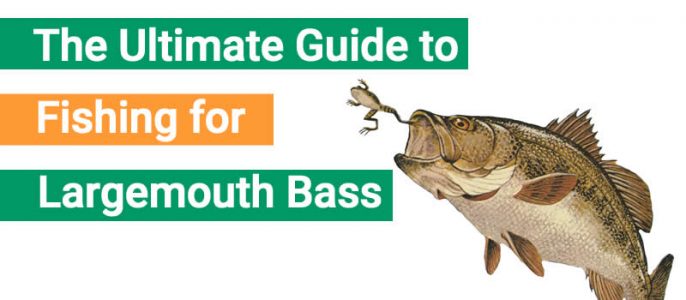If you buy via a link on this page, we may receive a commission, at no extra cost to you.Learn more
There are three main fishing lines on the market. You can choose from monofilament, fluorocarbon, or braided fishing lines. Each has different properties and is used to present baits and lures in different ways. It is imperative to know these separate lines to present baits and lures to fish. Using the wrong line to bait/lure combination will result in fewer fish.
We need to realize that both braided lines and monofilament lines float. Fluorocarbon lines sink. Once you understand the capabilities of each line, you can make an informed decision.
Does it matter if the line sinks or floats?

Well, yes, it does. Some fishing lines are made to sink, and others are designed to float. The sinking line and the floating line both have their functions. They are made for a particular style of fishing. Each has a role to play in helping you to catch fish. Knowing when to use a floating or sinking line will help you catch your bag limit. There are pros and cons to different fishing lines. Stick around we are going to explain why it matters if a fishing line sinks or floats.
Which Fishing Line Sinks Or Floats?
We know there are three types of fishing lines. Let’s take a closer look at each one.
Monofilament
This fishing line is cheap, easy to use, and has been on the market for a long time. It holds knots very well and is easy to cast. It’s a good line for beginners. It is a very buoyant line making it excellent for surface lures. The downside is that it is not great for bottom fishing. It is also weaker than other lines of a similar diameter.
Fluorocarbon
Initially introduced in the 1970s, this line has evolved over the years. Problems with this line” stiffness” have been sorted out. It is much less visible underwater than other lines, and it is abrasion resistant. The downside is it doesn’t hold knots, as well, and it’s more susceptible to tangles. Fluorocarbon is a fast-sinking line suited to bottom fishing. It is an excellent choice for jigs and drop shots.
Braid
The braided line is the strongest line, pound for pound. It is made to last. It also has very little line memory, meaning it’s less likely to tangle or kink. That sounds great! The perfect line is a game-changer! But, of course, it’s not. It’s the hardest line to tie knots with, and fish with large teeth can snap it. It is the most expensive line.
Braid is perfect for use with spinning reels to cut through weeds. It is, however, highly visible underwater. Braided lines, in general, float. The longer it is in the water, the more water it will absorb. As it absorbs more water, the line will suspend itself under the water line. The braided line will just sit there, neither floating nor sinking.
Now we have a better understanding of the three lines, we need to choose which line suits our needs.
Which Line Do I Need For Topwater Fishing?
If you are topwater fishing with a bobber and bait, a monofilament line is an excellent choice. It’s very castable, and it floats. The float will not drag on the water. When fish bite, the monofilament line can stretch. The stretch of monofilament will act as a shock absorber. This creates a delay, increasing your chance of hooking a fish. Many anglers like to use braid for topwater fishing with a monofilament leader.
Why Should I Use Monofilament Line?
I will give some brief points as to why monofilament is my choice for topwater fishing.
- Affordable
- Floats
- Excellent shock absorption
- Stretches
- No surface drag
Which Line Do I Need For Bottom Fishing?
We already know that the fluorocarbon line sinks. That makes it an excellent choice for bottom fishing. It should never be used for topwater fishing. A sinking line will make it difficult to present baits and lures on the surface. They will look unnatural due to the drag of the sinking line.
Why Is Fluorocarbon Line The Best For Bottom Fishing?
Fluorocarbon is perfect for placing bait close to the bottom and getting more depth from weightless presentations. If I can, I will always use the fluorocarbon line for bottom fishing. Here’s why.
- Visibility- virtually invisible
- Sinks
- Abrasion Resistance- (rocks and structures)
- Sensitivity- (excellent when you don’t have a strike indicator)
- Waterproof- (fluorocarbon doesn’t hold water, so it won’t freeze)
Which Line Do I Need For Spinnerbaits?
The sensitivity of a braided line makes it great for working crankbaits and spinnerbaits. It’s also good if you hook into grass or seaweed. It will be easier to tell if you hook grass, and therefore you can remove it and carry on fishing. Remember, the braided line is highly visible, but it can be used with a leader line. The leader line can be either a monofilament or fluorocarbon line.
What Are The Benefits Of Using Braided Line?
I like to use braided lines in areas of heavy weed or deep water with structure. Below, I outline the benefits of the braid.
- More UV resistant
- Strength- stronger than monofilament of the same diameter
- No line memory- less likely to tangle
- No line stretch- more sensitive to fish bites.
What Is The Best All-Round Fishing Line?
Now we understand the importance of a sinking or floating line. Which line should I choose? If you are a beginner, we recommend a monofilament line. It’s cheap, readily available, and suitable for most fishing purposes. You can experiment with the other lines as you gain experience. Even though the monofilament line is a floating line, it can still be utilized for bottom fishing. Is it perfect? No. We already know its qualities and weaknesses. It can also be used for spinning and jigging.
Many purist anglers may argue against this. Consider this. The monofilament line was invented in the 1930s. The fluorocarbon line did not appear until the 1970s. Braided lines made a comeback in the 1990s after major improvements. What were anglers using before the 1970s? Monofilament line. That is what your grandfather used for years. Did your grandfather bottom fish? Perhaps he liked to troll or use spinnerbaits? You get my point.
Which Of The Three Fishing Lines Is Better?
There is no best kind of fishing line. It depends on your target fish, the condition of the water, and the fishing technique you employ. We are aware that each different fishing line serves a unique purpose. Some are interchangeable others are not.
Braids can be married to either monofilament or fluorocarbon by employing a leader. You would never use braid as a leader on the other two lines. Anglers will always disagree on which line is best. Most will use two of the aforementioned lines to suit their needs. Experiment. Find out what other anglers use to catch the same fish that you are going to target.
Final Thoughts
It’s easy to become confused in the world of fishing. Technology has improved in every field. The fishing line is no exception. There will be more improvements in the future.
There will be more debates amongst anglers as to the best fishing line to use. Whether you stick with one line or all three will come down to personal choice. All you need to know is that different lines help you to catch fish with your chosen bait. Happy fishing.




